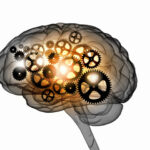
According to the Anxiety and Depression Association of America or ADAA, anxiety disorders are the most common mental-illnesses facing people in the United States. They affect approximate 18% of the population, or 40 million people aged 18 or older. In children, it is estimated that 1 in 8 children will experience some kind of anxiety disorder, making them more likely to perform poorly in school, miss out on important social experiences, and engage in substance abuse.
But what is anxiety? Anxiety is actually a blanket term to refer to a variety of stress-inducing disorders. Here are the 6 main types of anxiety disorders and what exactly they mean.
1. Generalized Anxiety Disorder (GAD)
GAD is characterized by persistent, excessive worry over everyday things. It is estimated that approximately 3.1% of the population, or 6.8 million adults, suffer from GAD, with women being twice as likely to be affected. GAD can stem from a variety of sources, including but not limited to family backgrounds, life experiences, especially if they’re particularly stressful, and biological factors. GAD usually comes on gradually and can begin at any point in one’s lifetime, but is most likely to appear anywhere between childhood and middle age. People suffering from GAD often worry about the worst case scenario, even with no apparent reason for concern. Sometimes, just trying to get through the day can be anxiety-inducing. Anxiety levels for people with GAD can range from mild to severe. On the mild end of the spectrum, people with GAD can live functional, productive lives. However, when their anxiety levels are severe, GAD sufferers may find themselves having difficulty carrying out even the simplest day-to-day activities. GAD can also be accompanied by a variety of other mental-health related issues like depression, other anxiety disorders, or an inclination towards substance abuse.
2. Social Anxiety Disorder
Social Anxiety Disorder is largely characterized by an extreme fear of public scrutiny or judgment, especially in social or performative situations. This goes beyond just being shy. Those who suffer from Social Anxiety Disorder may experience extreme anxiety in any social situations, making it disruptive for daily life. Social Anxiety Disorder can also make it difficult to establish and maintain relationships whether casual or romantic. This can lead to feelings of isolation, loneliness, shame, and even powerlessness. Social Anxiety Disorder usually begins somewhere in childhood or adolescence with the average age of onset being around 13. Children with Social Anxiety Disorder may demonstrate certain extreme behaviors to express their feelings of anxiety, this includes clinging behaviors, tantrums, and even mutism. It is estimated that around 15 million American adults suffer from Social Anxiety Disorder which can interfere with their daily lives both personal, social, and professional.
3. Panic Disorder and Agoraphobia
Panic Disorder describes people who experience seemingly random and spontaneous panic attacks and may be fearful of of a recurring attack. These attacks often occur unexpectedly and can even take place during sleep. Because of the random and seemingly unprovoked nature of this disorder, many sufferers avoid taking treatment or talking about their experiences for fear of being misunderstood. Panic attacks are abrupt onsets of fear or other feelings of discomfort. They can occur within minutes and include feelings of sweating, shaking, heart palpitations, nausea, light-headedness, and even feelings of disassociation from oneself or reality. Because some of the symptoms of a panic attack mimic other diseases and disorders, particularly those of the heart and/or thyroid, one might misdiagnose one’s panic attack as being a symptom of one of these other conditions. Agoraphobia relates to a fear of entering social situations where one may have previously experienced feelings of anxiety or experienced a panic attack. It is estimated about 1 in 3 people with Panic Disorder also develop Agoraphobia as they avoid more and more places out of fear of experiencing another panic attack. As a result, they may construct small safety zones for themselves, leaving which can induce feelings of extreme anxiety.
4. Obsessive Compulsive Disorder (OCD)
OCD is best characterized by unwanted and intrusive thoughts, or obsessions, which compel the person to perform repeated ritualistic behaviors to combat their anxiety. This can include repeatedly washing something, counting, checking things, or other irrational yet compulsory behaviors. Left untreated, OCD has the ability to interfere with all aspects of life, personal, social, and professional. This is because OCD can interfere with a person’s day-to-day life and routine, as time is spent focusing on obsessive thoughts rather than being able to focus on daily activities. This can make ordinary tasks like schoolwork, family-related activities, job-work, and social activities more difficult to those who suffer with OCD than those who do not. Both adults and children can suffer from OCD, however, unlike adults, children may not be able to recognize that their behaviors are excessive.
5. Post-Traumatic Stress Disorder (PTSD)
PTSD can be a seriously debilitating that occurs when someone has experienced a particularly traumatic event like a natural disaster, serious accident, war, sudden death of a loved one, or violent attack. While many people who experience such events can recover, those with PTSD may continue to have anxiety and depression stemming from the event for months and even years on end. Both adults and children can develop PTSD with women twice as likely to develop it as men. Like other anxiety disorders, PTSD can cause or occur with depression, other anxiety disorders, and substance abuse. It is estimated that around 7.7 million Americans over the age of 18 suffer from PTSD. Mass violence has been shown to be the largest trigger for PTSD, with a rate of 67% likelihood that those exposed to it will develop PTSD. PTSD can affect one’s ability to form and maintain close relationships as it can cause problems with trust and communication which affects how the sufferer interacts with others. As a result, sufferers are also particularly sensitive to how they are treated and spoken to, making them especially affected by how loved ones respond to them.
6. Phobias
Phobias is a broad category encompassing a wide variety of irrational fears. People with specific phobias work hard to avoid common places, objects, and situations even when they know there’s no real threat or danger. This occurs even when the person knows their fear is irrational. Phobias, therefore, can interfere with daily life and activities just like many other anxiety disorders. While some phobias can manifest in childhood, many occur suddenly and unexpectedly sometime during adolescence and adulthood. Phobias can put strains on relationships and contribute to low self-esteem.
The First Step To Treating Anxiety
While anxiety can leave one feeling helpless it is often extremely treatable. Learning how to treat anxiety starts with identifying what exactly one is feeling and then determining the true source. There are a variety of treatment and therapy options for people dealing with different types of anxiety. If any of this describes you don’t hesitate or be afraid to seek help and find out what treatment options are best for you.




